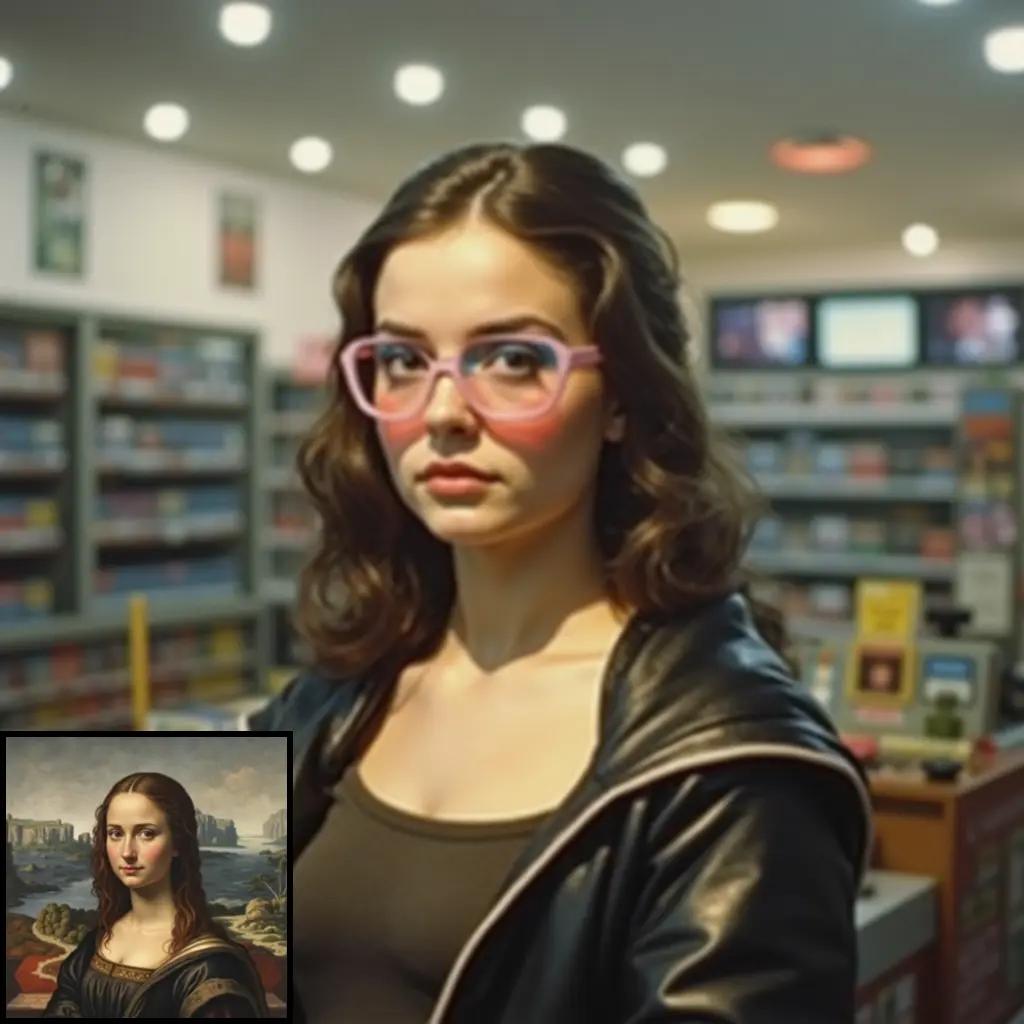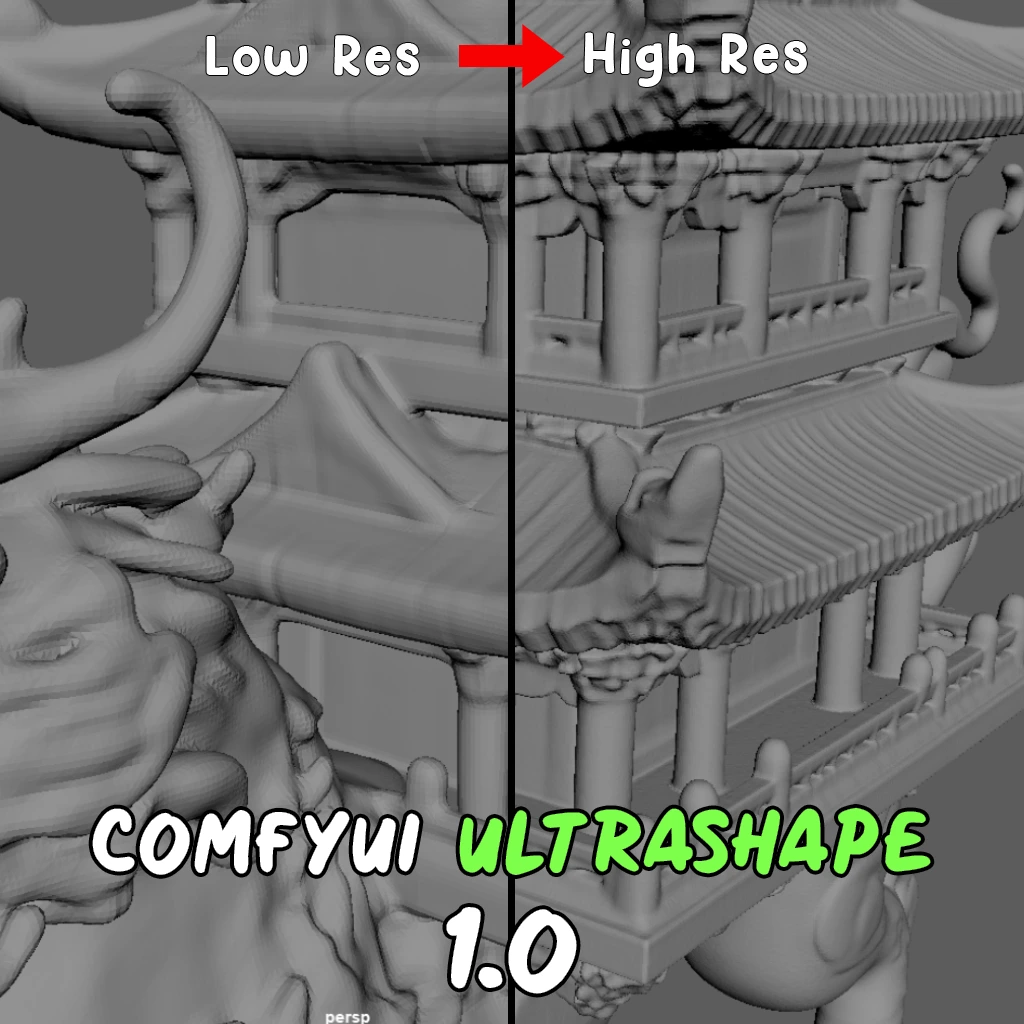ComfyUI Extension: ComfyUI OOTDiffusion
ComfyUI-OOTDiffusion
AuroBit (Account age: 674 days) Nodes
View all nodes(3) Latest Updated
2024-07-12 Github Stars
0.45K
How to Install ComfyUI OOTDiffusion
Install this extension via the ComfyUI Manager by searching for ComfyUI OOTDiffusion- 1. Click the Manager button in the main menu
- 2. Select Custom Nodes Manager button
- 3. Enter ComfyUI OOTDiffusion in the search bar
Visit ComfyUI Online for ready-to-use ComfyUI environment
- Free trial available
- 16GB VRAM to 80GB VRAM GPU machines
- 400+ preloaded models/nodes
- Freedom to upload custom models/nodes
- 200+ ready-to-run workflows
- 100% private workspace with up to 200GB storage
- Dedicated Support
ComfyUI OOTDiffusion Description
ComfyUI OOTDiffusion is a custom node for ComfyUI that seamlessly integrates the OOTDiffusion functionality, enhancing the user interface with advanced diffusion capabilities.
ComfyUI OOTDiffusion Introduction
ComfyUI-OOTDiffusion is an extension for ComfyUI that integrates the powerful OOTDiffusion functionality. OOTDiffusion is a state-of-the-art model designed for virtual try-on applications, allowing users to visualize how different clothing items would look on a model. This extension simplifies the process by providing custom nodes within ComfyUI, making it easier for AI artists to create and manipulate virtual try-on workflows without needing extensive technical knowledge.
By using ComfyUI-OOTDiffusion, you can seamlessly generate images of models wearing various outfits, experiment with different styles, and create visually appealing content for fashion design, marketing, or personal projects. This extension addresses the challenge of manually editing images to try on clothes, offering a more efficient and automated solution.
How ComfyUI OOTDiffusion Works
ComfyUI-OOTDiffusion works by integrating the OOTDiffusion model into the ComfyUI environment. The OOTDiffusion model uses a technique called latent diffusion, which allows it to generate high-quality images of models wearing different outfits. Here's a simplified explanation of how it works:
- Input Images: You provide images of a model and the clothing item you want to try on.
- Latent Diffusion: The model processes these images using a latent diffusion technique, which involves transforming the images into a latent space where the model can manipulate them more effectively.
- Outfit Fusion: The model then fuses the clothing item onto the model's image, ensuring that the clothing fits naturally and looks realistic.
- Output Image: Finally, the model generates an output image of the model wearing the new outfit. This process is automated within ComfyUI, allowing you to focus on the creative aspects of your work rather than the technical details.
ComfyUI OOTDiffusion Features
ComfyUI-OOTDiffusion offers several features to enhance your virtual try-on experience:
- Load OOTDiffusion Local: This node allows you to load the OOTDiffusion model from a local directory. It's useful if you have a specific version of the model saved on your computer.
- Load OOTDiffusion from Hub: This node automatically downloads and loads the OOTDiffusion model from Hugging Face, ensuring you always have access to the latest version.
- OOTDiffusion Generate: This node generates images of models wearing the selected outfits. You can customize the output by adjusting parameters such as the configuration (cfg) to control how closely the output image matches the input clothing.
Customization Examples
- Configuration (cfg): Adjusting the cfg parameter changes how tightly the clothing fits the model. A higher cfg value results in a more precise fit, while a lower value allows for a looser fit.
- Model and Clothing Images: By experimenting with different model and clothing images, you can create a wide variety of virtual try-on scenarios, from casual wear to formal attire.
ComfyUI OOTDiffusion Models
ComfyUI-OOTDiffusion supports different models tailored for various use cases:
- Half-Body Model: Ideal for generating images of models wearing upper-body clothing items like shirts and jackets. This model is trained on the VITON-HD dataset.
- Full-Body Model: Suitable for generating images of models wearing full-body outfits, including dresses and pants. This model is trained on the Dress Code dataset.
When to Use Each Model
- Half-Body Model: Use this model when you want to focus on upper-body clothing items. It's perfect for creating images of tops, jackets, and blouses.
- Full-Body Model: Use this model for complete outfits, including dresses, pants, and skirts. It's ideal for showcasing full ensembles and creating a cohesive look.
What's New with ComfyUI OOTDiffusion
Recent Updates
- 2024-03-14: Added support for the
diffusers-0.26branch, ensuring compatibility with the latest version of the diffusers library. - 2024-03-10: Introduced ONNX support for human parsing, improving the model's ability to accurately segment and process human figures.
- 2024-03-04: Added the Full-Body model, expanding the range of clothing items that can be visualized.
- 2024-03-01: Provided a detailed Windows installation guide to help users set up the extension on Windows systems.
- 2024-02-25: Removed the git LFS download tutorial and introduced the Load OOTDiffusion from Hub node for easier model loading. These updates enhance the functionality and usability of ComfyUI-OOTDiffusion, making it more versatile and user-friendly for AI artists.
Troubleshooting ComfyUI OOTDiffusion
Here are some common issues you might encounter while using ComfyUI-OOTDiffusion and their solutions:
Common Issues and Solutions
- Error:
fatal error: cuda_runtime.h: No such file or directory compilation terminated. ninja: build stopped: subcommand failed. - Solution: Install the CUDA toolkit by running
conda install cuda-toolkit=12.1 -c nvidiaand ensure that theCUDA_HOMEandCUDA_PATHenvironment variables are correctly set. - Error:
subprocess.CalledProcessError: Command '['where', 'cl']' returned non-zero exit status 1. - Solution: This issue typically occurs on Windows. Follow the Windows installation guide to configure MSVC correctly.
Frequently Asked Questions (FAQs)
- Q: How do I switch to a different version of the diffusers library?
- A: Use the command
git switch diffusers-0.26to switch to thediffusers-0.26branch and then reinstall the dependencies withpip install --force-reinstall -r custom_nodes/ComfyUI-OOTDiffusion/requirements.txt. - Q: Can I use ComfyUI-OOTDiffusion on Windows?
- A: Yes, you can. Follow the detailed Windows installation guide provided in the documentation to set up the extension on a Windows system.
Learn More about ComfyUI OOTDiffusion
To further enhance your experience with ComfyUI-OOTDiffusion, here are some additional resources:
- OOTDiffusion GitHub Repository: OOTDiffusion
- Hugging Face Model Checkpoints: OOTDiffusion Checkpoints
- OOTDiffusion Paper: OOTDiffusion: Outfitting Fusion based Latent Diffusion for Controllable Virtual Try-on
- Community Forums: Join the discussion and get support from other AI artists and developers on platforms like Reddit or specialized AI forums. By exploring these resources, you can deepen your understanding of ComfyUI-OOTDiffusion and make the most of its capabilities in your creative projects.
ComfyUI OOTDiffusion Related Nodes
RunComfy is the premier ComfyUI platform, offering ComfyUI online environment and services, along with ComfyUI workflows featuring stunning visuals. RunComfy also provides AI Models, enabling artists to harness the latest AI tools to create incredible art.




